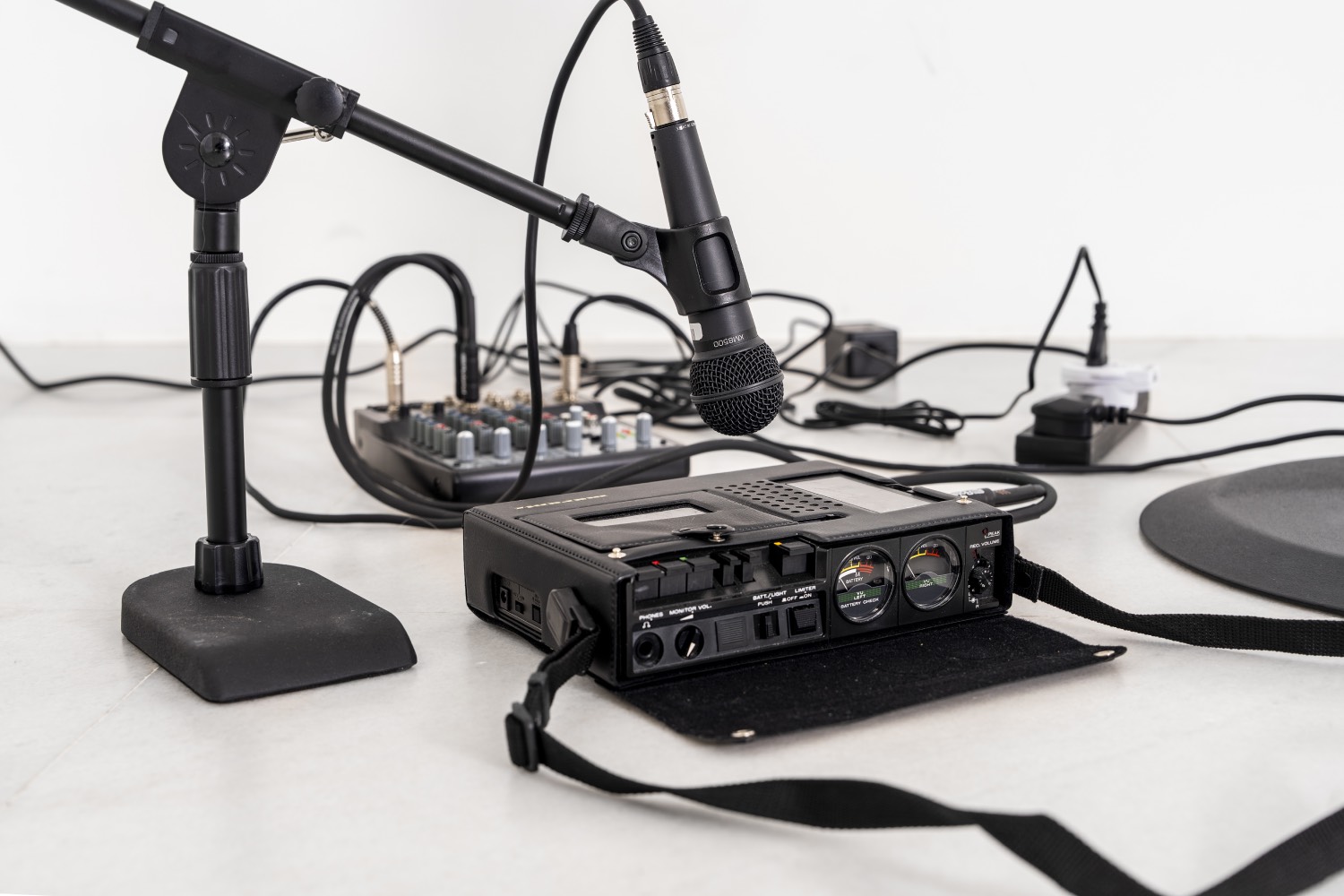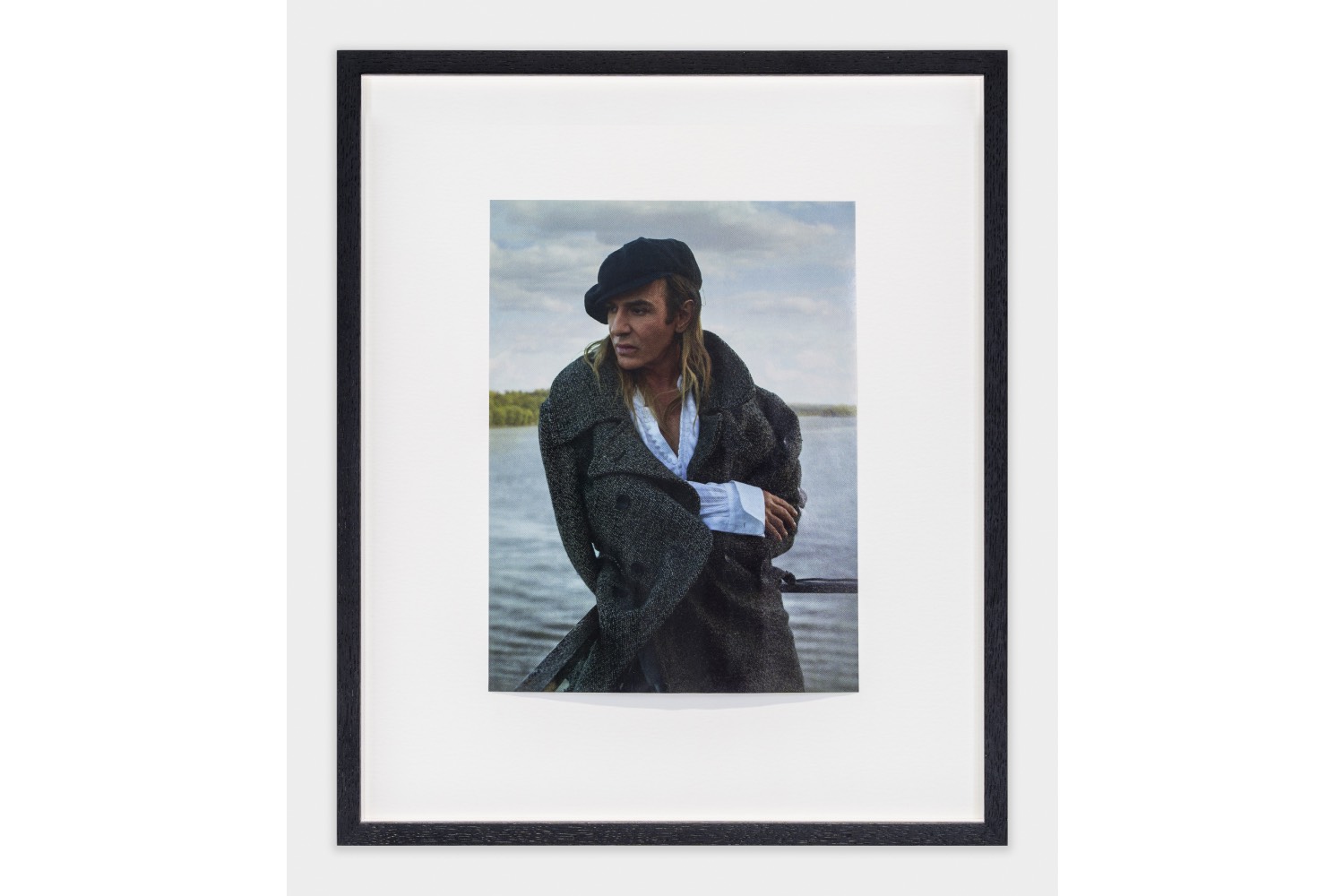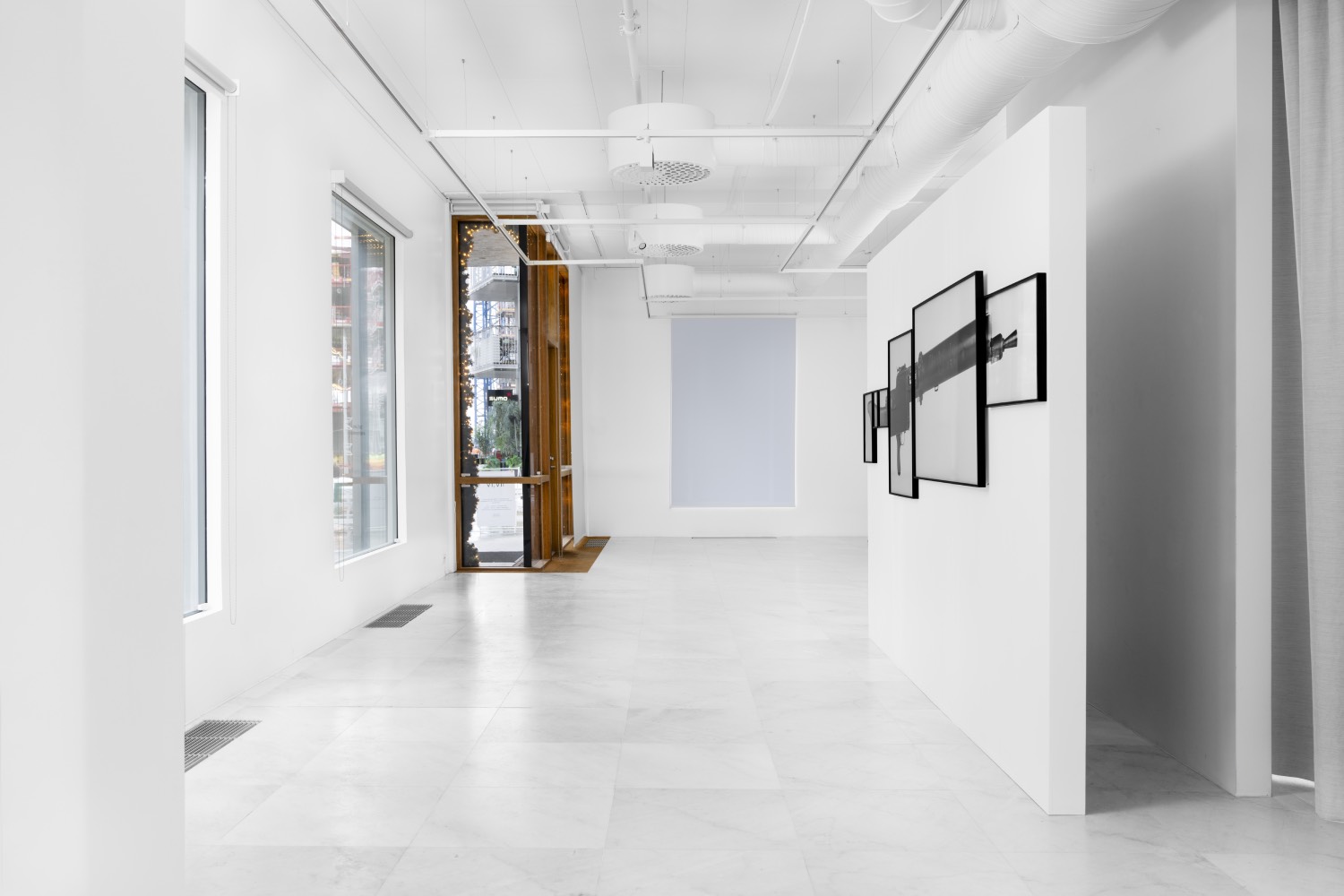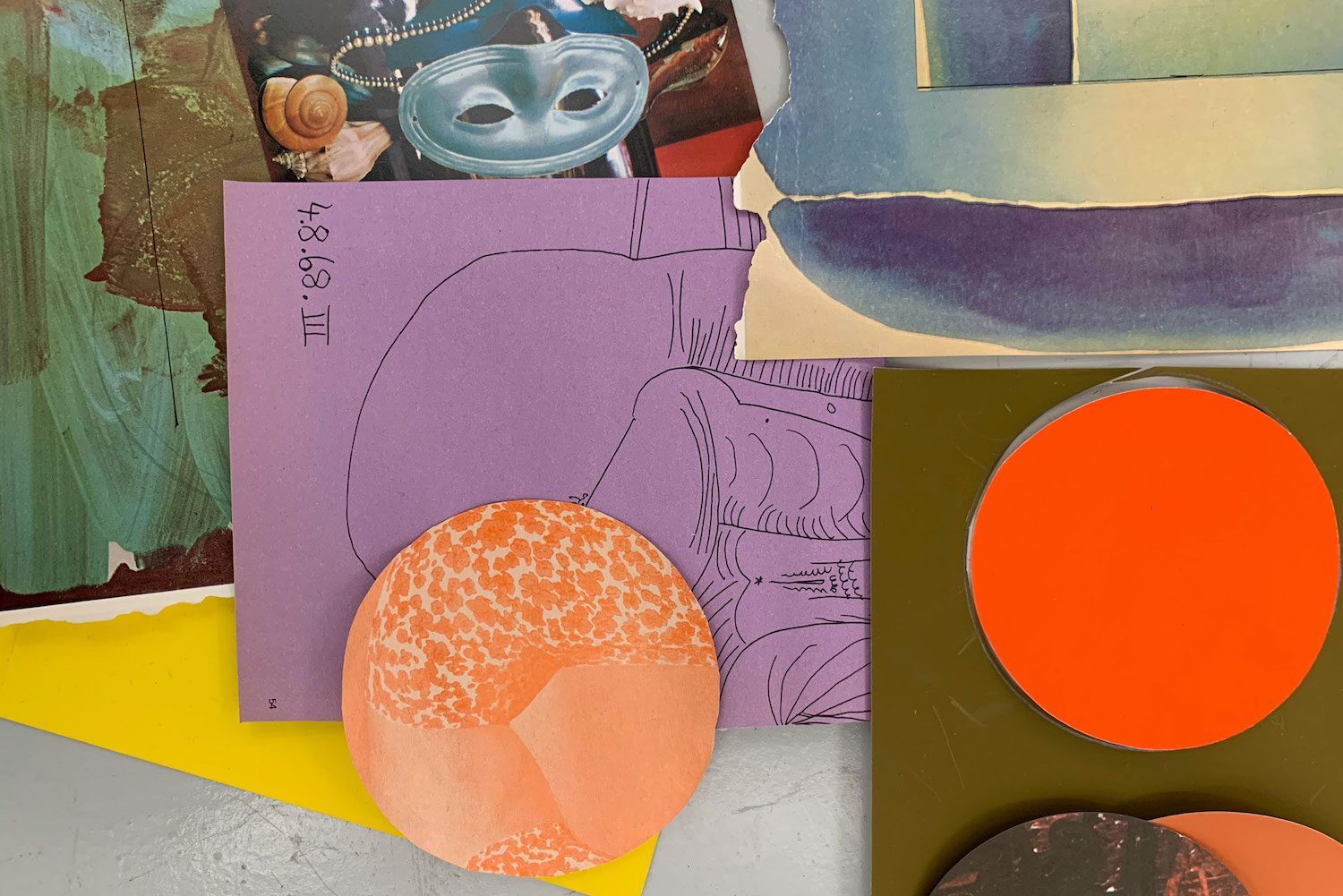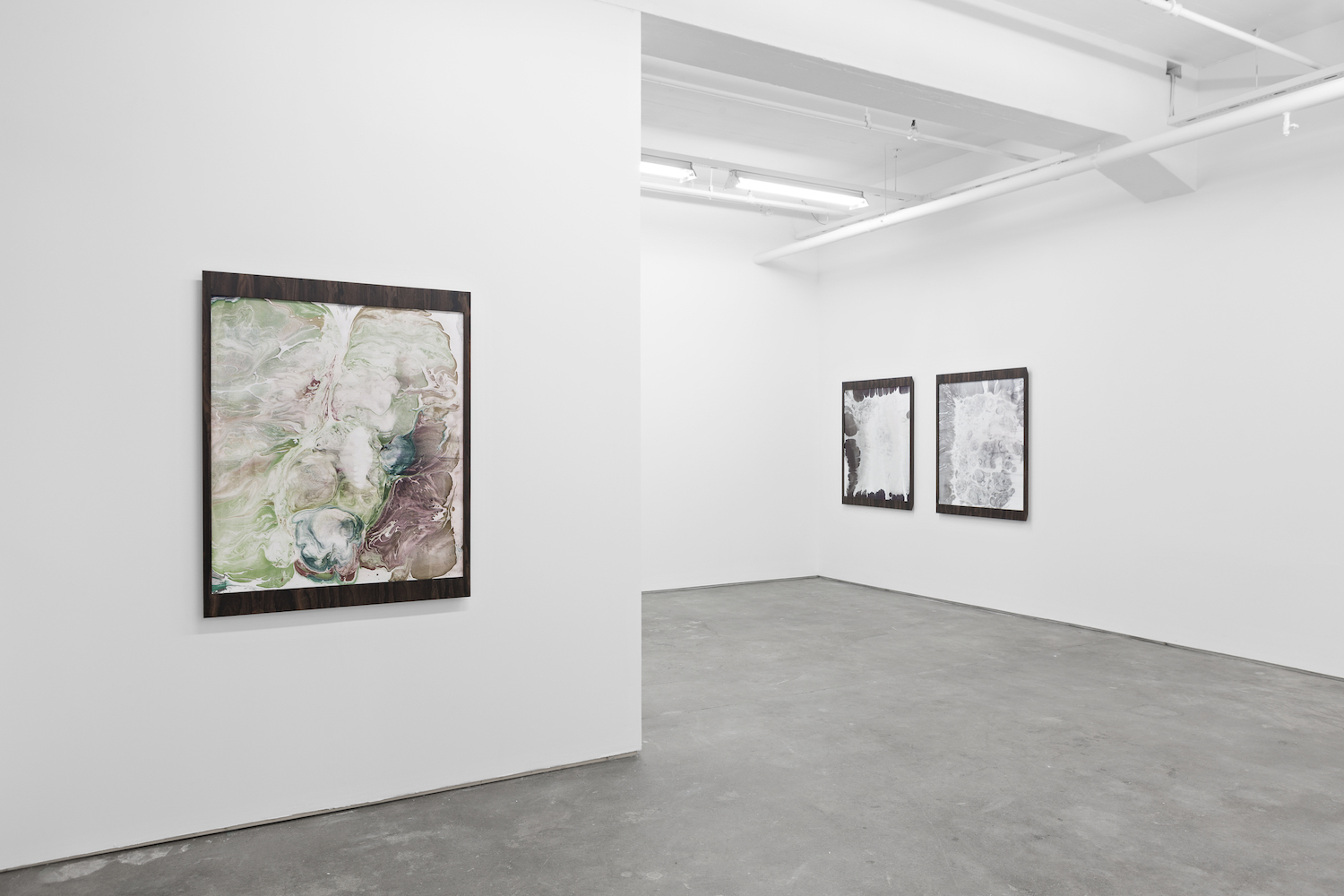Upon entering the ground floor of VI, VII, in Oslo, one can hear the underlying crackle of a vinyl recording beneath the AI generated voice of David Attenborough. The sound comes from a tiny but state-of-the-art Genelec audio monitor, connected via microphone and cables to a vintage portable cassette recorder, which plays, in its entirety, a C90 cassette tape with a voice recording of a six-chapter (including a preface) work of autofiction by the artist, each section punctuated mainly by contemplative classical music. The staging of this setup — the display of vintage technology, the presence of a secondary “fake” David and an equally “fake” recording — is so flat-out in your face that its artificiality is impossible to ignore, even as one becomes immersed in the narrative and follows the first-person narrator’s coming-of-age story.
Autofiction is a familiar medium for David Lieske, and this piece features many of the upper-middle-class tropes featured in previous projects. These include references to horse-riding parcours and tennis clubs, as well as elaborate descriptions of fashion to signify distinction or blending in. In the first few minutes of the recording, the main character declares his “utmost desire” to escape his “heteronomous being” and gain “some sort of autonomy, even if it was small.” Over the course of the next ninety minutes we follow his relationships at school, with his friends, and with his parents in a wealthy suburb of Hamburg.
His complacent normality is disrupted when he spontaneously decides to join a student demonstration, leading to a chance encounter with the “Autonome,” an antifascist black bloc. A demonstration in the heart of Hamburg turns into a violent riot when the police show up. The following week, the protagonist tries to relive his encounter by joining the black block. This leads him first to another demonstration, then to the legendary Hamburg cultural center Rote Flora — where he waits to confront a neo-Nazi march that never arrives — and finally to the home of one of the activists. In spite of the brittle voice and detached manner of the digital Attenborough, it’s hard to maintain the distanced perspective of an outside observer. The narrative is often gripping in its detailed portrayal of an adolescent on the path to self-discovery.
Listening while looking out of the gallery’s windows at the elegant facades of the new housing complexes in Oslo’s Björvika district, one could imagine masked demonstrators dressed in black racing around the corner, followed in close pursuit by police in riot gear. There are few moments of open violence in the story, but there is a lingering and disquieting air of discomfort in the description of an everyday life suffused with casual displays of racism, classism, and a decisive normative pull, which the main character dulls by smoking a lot of hash.
Passersby may take note of the motionless listeners standing in the gallery, but their eyes surely widen when falling on the enlarged multi-panel photograph of a machine gun on the wall. It is an MG 08/15, from London’s Imperial War Museums, what was the German army’s standard machine gun in World War I. Its model number has since entered German vernacular to denote what is “so standard it’s dull,” as Nina Franz writes in her press text. From the outside it still reads primarily as a weapon, an image of violence that feels out of place among the neighboring high-class shops, restaurants, and landmark public buildings.
Titled Armed Interpretation (08/15) I-VI (2024), the work consists of six framed inkjet prints in different standard paper sizes, from A0 to A6, the format a near ubiquitous example of German industrial norms. What has since become the DIN standard, developed during WWI to enable increased machine and weapon production, today includes tens of thousands of different standards, structuring many systems of technology and thereby everyday life. These norms allow background operations to run behind the scenes, much like an ideology — to quote Slavoj Žižek — that is in place exactly when you don’t think about it. Here, however, Lieske’s work is less a comment on the universal structural violence of capitalism than it is a reflection on individual and national identity, in this case within a historical German context marked by a rigid insistence on a dulling performance of normality.
By itself, this may be a little on the nose; but the artist presents his images piggybacked on a freestanding white MDF wall. Indistinguishable from any other temporary structure you might find in a gallery space, it’s titled Armed Interpretation (DIN A -3) (2024), suggesting that the wall may offer a counter-narrative to what is presented on it (the inkjet prints). The (DIN A -3) of the title suggests a negative inversion of the format, an attempt to open up new dimensions beyond the regular paper formats — a space of the imagination, of denormalization. Certainly, however, not a space unrestricted by associations of norms and their history, but possibly a space of anti-norms, as if to say, there is a possibility for dissent.
Anti-Anti- (2022) consists of a framed page from Vanity Fair’s July 2013 issue: a photograph of fashion designer John Galiano by Annie Leibovitz, which accompanied an article by Ingrid Sischy, titled “Galliano in the Wilderness.” The piece was published two years after Galiano was fired from Dior, when a cell phone video had gone viral, showing him spewing obscenities and anti-Semitic rants. The photograph romanticizes the designer as a pensive recluse against a backdrop of trees, picturing him in his “efforts to atone,” as the subtitle puts it. The Anti-Anti in the title may refer to the attempt to walk back what he had said, but also for doing what’s required after stepping outside of the acceptable norms of society. And there is another subtlety, clear to the pedantic: Vanity Fair (like most magazines) is not printed in an A4 format. Because, of course, it reports the extraordinary, not the norm. Or does it?

